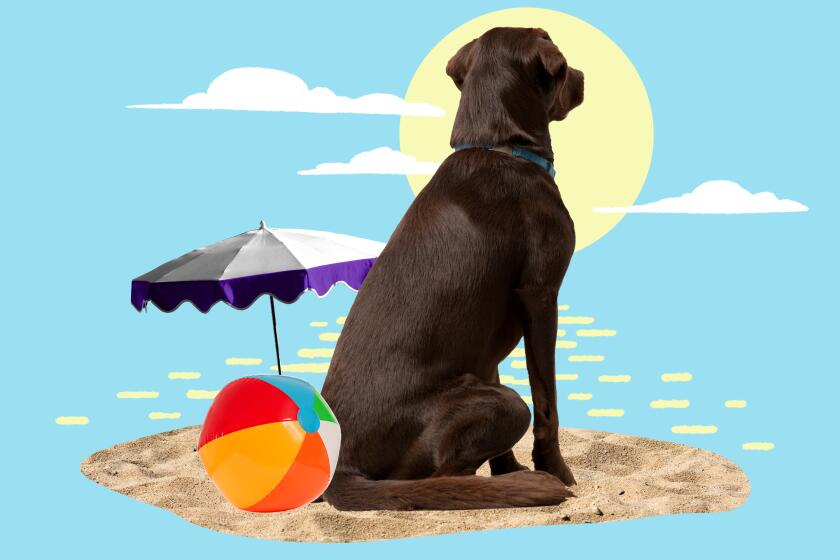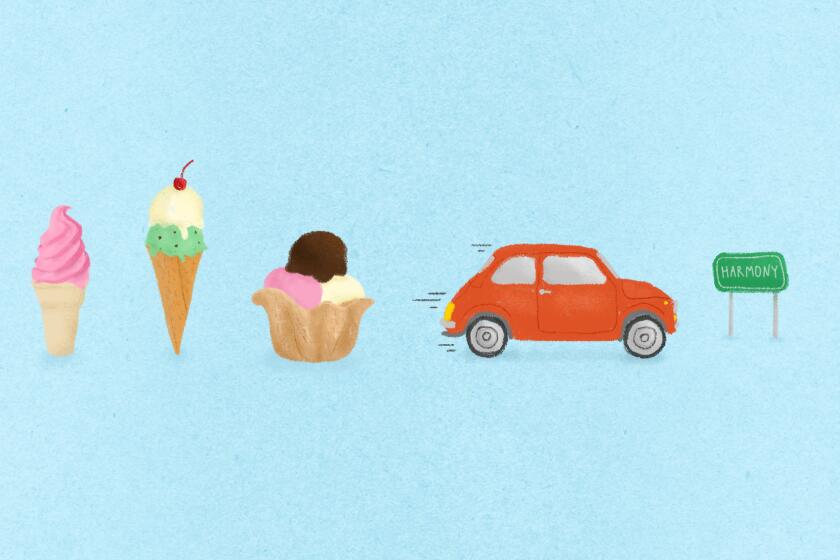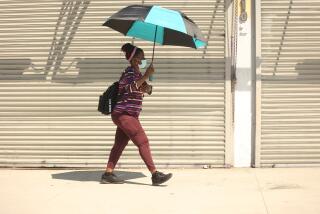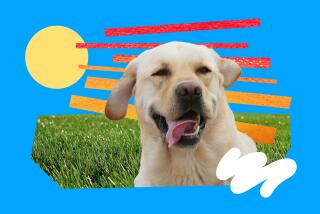How to keep your pets cool in this scorching heat
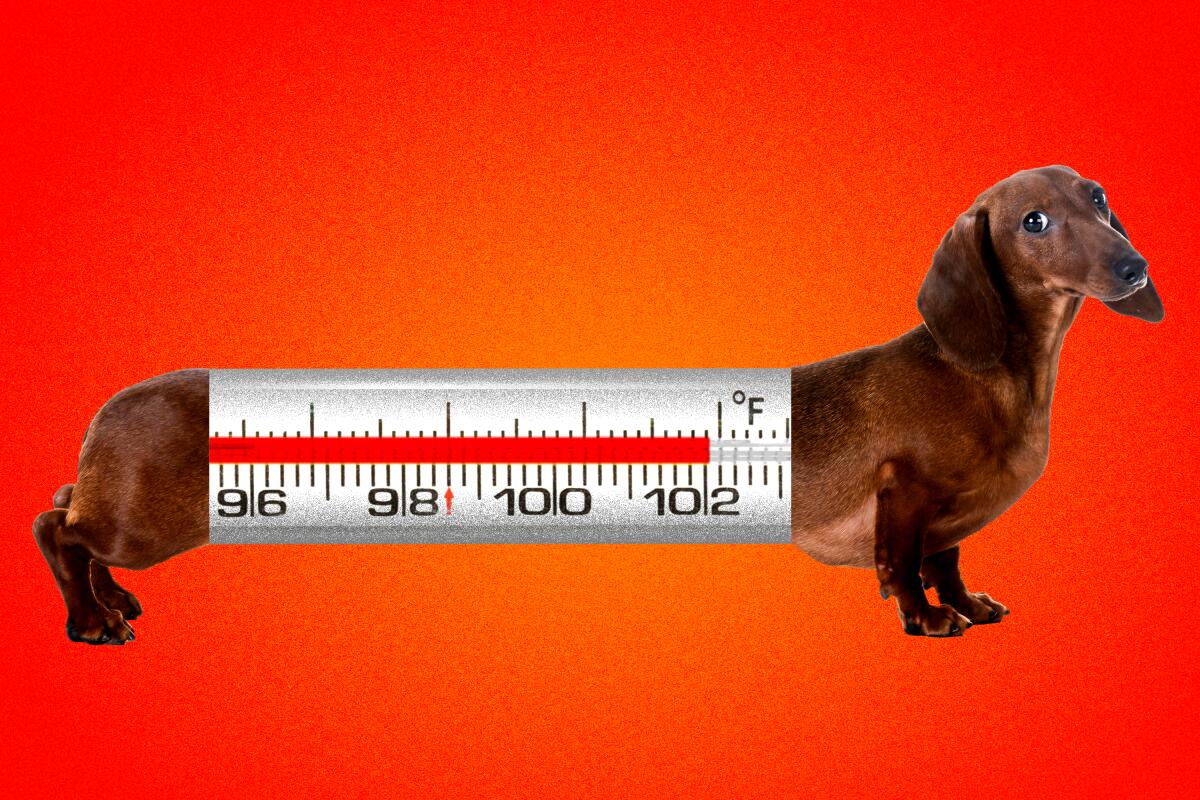
- Share via
During the summer months when temperatures are hotter than normal, it’s important to take extra precautions to keep yourself and your loved ones cool — and this includes your furry friends.
“One thing that I always like to talk to my pet parents about is, ‘If it’s too hot for us, then it’s definitely too hot for them,’” says Dr. Phillip An, small animal general practitioner and owner of Sunset Veterinary Center, which is slated to open in September in Diamond Bar. He notes that pets — particularly cats and dogs — don’t have as many sweat glands as humans. Instead, they primarily regulate their temperature through panting.
But placing your pet in hot conditions, such as by taking them along on a lengthy hike on a warm, sunny day, can lead to life-threatening and sometimes fatal consequences given that heat exhaustion can progress to heatstroke in a matter of minutes.
“Our pets, especially dogs, can be so loyal that they won’t show any discomfort until it’s too late,” says Dr. Jennifer Hawkins, a veterinarian who is the executive director for the Southern California Veterinary Medical Assn., which is based in Cypress. “So whether you’re throwing a ball in the middle of a hot day and you might feel OK, you may have a dog that’s going to keep going after that ball until they suffer heatstroke.”
She adds, “That’s where I think pet owners may not realize that while we know we’re starting to feel uncomfortable and we can go inside and get some water and cool off, our pets may not let you know until they’re sick.”
Which beaches in Los Angeles and Orange counties allow dogs? Check our list to find out.
Hawkins notes that temperatures don’t have to reach triple digits for your pet to overheat, so pet parents should become more mindful of these potential dangers when temperatures are as low as 80 degrees.
Among the most vulnerable pets to suffer from heat-related complications are dogs that are very young and old and short-nosed dogs such as pugs and bulldogs — which are especially popular in Los Angeles — because they can’t breathe as easily as those with longer noses. Pets with medical issues also face higher risk of heat-related illness, along with other small mammals like rabbits and guinea pigs.
“If you have a rabbit, chinchilla or guinea pig … they are very sensitive to the heat and they can die inside the house if it gets to be 85 or 90 [degrees] and there’s no movement of air,” says Dr. Clyde Pitts, owner of Studio City Animal Hospital.
It can stay hot in L.A. well into autumn, so here’s how to keep your animal companions cool in the heat and how to spot signs of heatstroke, according to local veterinarians.
1. Never leave your pet alone in a parked vehicle
Los Angeles is one of the most dog-friendly cities in the country, so it’s understandable that people like to bring them along whenever they can. But on hot days, experts recommend that you leave your dogs — or any pet — at home.
Veterinarians say that in the event you have to bring your pet along with you, you shouldn’t leave them alone inside a vehicle under any circumstances. Leaving the air conditioner running, cracking windows or only being away for a few minutes aren’t sufficient protections, as temperatures can rapidly rise to dangerous levels inside a vehicle.
“It’s just not worth the risk to their health and safety,” Hawkins says. “It can only take a few moments with mild weather outside for the car to reach unbearable temperatures, much less the heat that we’re experiencing right now.”
Swimming holes, ice cream and twilight hikes are your tickets for staying cool on your summer travels.
2. Limit exercise and outdoor activity
There’s a reason that many humans opt to exercise in the morning when it’s cooler outside or in the evenings when the sun is setting. This applies to your pets as well.
Experts say you should limit exercise and outdoor activities, such as walks and playing at the dog park, to the coolest times of the day. This is particularly important for dog owners because asphalt — common on L.A. roadways — can quickly heat up. If a dog walks onto a hot surface, it can severely burn their paw pads.
“That can be very painful for them because now they’re walking around basically with large blisters on their paws,” said Dr. Julio López, a board-certified specialist in veterinary internal medicine and owner of Encino Veterinary Center. “So I think it’s one of those things that we as people don’t really think about because we wear shoes.”
A common tip that veterinarians tell pet parents is to test the ground before taking pets outside. You can do this by placing the back of your hand on the ground for about five seconds. If it feels too hot for you, then it’s definitely too hot for your pet. If your dog, for example, has a history of getting burns on their paw pads, you might want to consider purchasing dog booties to use during walks.
It’s also critical to adjust the intensity and duration of exercise on hot days. “Stop frequently to give them a rest because they’ll try to keep up with you,” says Pitts. “They’re very loyal [and] they love us even though they’re overheating.”
3. Provide ample water for your pet at all times
It’s always important to have fresh water readily accessible for your pet, but it’s especially vital on hot days. Experts suggest having multiple spill-proof bowls for your pets and making sure they’re placed in shady areas.
And if you’re taking your pet outdoors, it’s wise to bring more water than you think you’ll need and to make sure they get a drink before you head out the door. Pet parents also can consider purchasing collapsible travel bowls, which often have a clip, making them convenient to carry.
Trees may not be able to solve all our problems but they can offer a reprieve on hot summer days. Here are several of our favorite places to find shade in the L.A. area.
4. Keep your dogs in cool, shaded areas indoors or outdoors
Whether your pet is inside or outside — for a limited amount of time — at your home, many veterinarians say it’s best to keep them in cool, shaded areas. Owners of rabbits, guinea pigs and other animals that are typically kept in cages should also avoid placing cages in direct sunlight. Also, hot air rises so it’s best to place cages on a low surface. Placing a cold or frozen water bottle in the cage can help keep pets cool. If you don’t have an air conditioning unit in your home, you can use fans to keep air flowing.
There’s an array of products, like cooling mats and vests, that pet owners can purchase to provide comfort for their pets, but many experts say they aren’t mandatory.
“Keeping your pets cool — aside from your energy bill — should be relatively inexpensive,” Hawkins says. “There’s a lot of great novel products like cooling beds, but they’re not required. A simple fan [and] using the shade are great ways to keep pets comfortable.” She notes that some pets, like rabbits, also don’t tolerate rapid temperature changes.
She adds, “You just want to keep them cool. You don’t have to keep them cold.”
5. Watch for signs of heatstroke
Heatstroke, the most severe heat-related complication, typically occurs when a pet’s body temperature exceeds 104 degrees. Common signs include excessive panting and drooling, discolored gums (no longer a vibrant pink color), vomiting, diarrhea and lethargy. Pets may even collapse or go into a seizure.
“It starts off with simply an increase in their heart rate and they start panting … very, very subtle,” An says. “But if a pet parent is able to catch it early and [the pet hasn’t] been in this stressful environment long enough, it may not turn into this terrible sequence of events that in some cases can end up being fatal.”
If your pet shows any of these signs, experts recommend contacting your local veterinarian to seek medical advice. In the meantime, you can apply tepid water to the sparsely furred areas of their skin (belly, groin area, armpits and paws) and place them in a cool area.
More to Read
Sign up for The Wild
We’ll help you find the best places to hike, bike and run, as well as the perfect silent spots for meditation and yoga.
You may occasionally receive promotional content from the Los Angeles Times.
